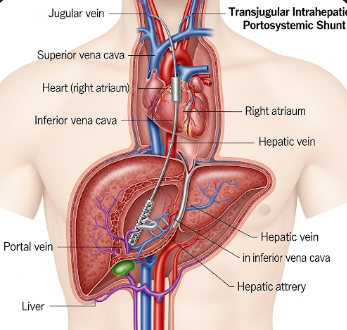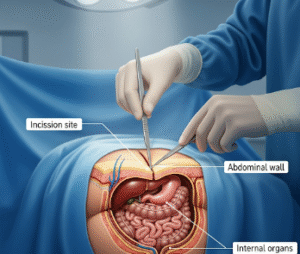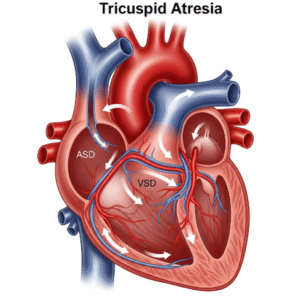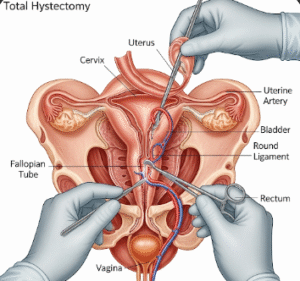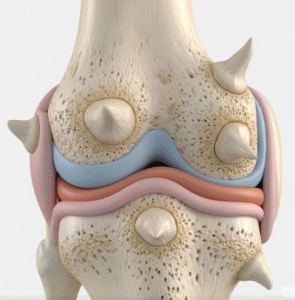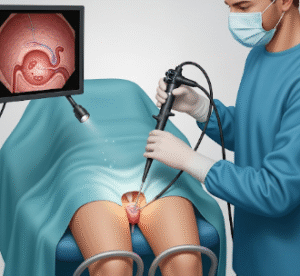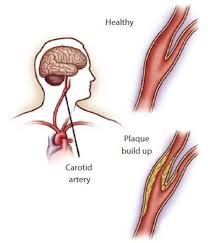Overview
Transjugular Intrahepatic Portosystemic Shunt (TIPS) is a minimally invasive procedure used to treat complications of portal hypertension, most commonly caused by liver cirrhosis. TIPS involves creating a shunt between the portal vein and hepatic vein within the liver to reduce high blood pressure in the portal system.
In Korea, TIPS is offered at advanced interventional radiology and hepatology centers, combining state-of-the-art imaging, skilled interventional radiologists, and comprehensive liver care. This allows effective management of complications such as variceal bleeding, refractory ascites, and portal hypertensive gastropathy.
What is TIPS?
TIPS is a radiologically guided procedure that creates an internal bypass for blood flow in the liver, reducing pressure in the portal vein.
Indications include:
- ✦ Variceal bleeding not controlled by medication or endoscopy
- ➤ Refractory ascites due to portal hypertension
- ✦ Portal hypertensive gastropathy
- ➤ Preoperative preparation for liver transplant in select cases
Benefits of TIPS:
- Immediate reduction in portal pressure
- Prevention of recurrent variceal bleeding
- Relief from ascites accumulation
- Bridge therapy for patients awaiting liver transplantation
What are the Benefits?
✅ Minimally invasive with no major open surgery
➤ Rapid reduction in portal hypertension
✅ Effective in controlling variceal bleeding and ascites
➤ Can improve quality of life and reduce hospitalizations
✅ Can be performed in patients unsuitable for surgery
Procedure Details
1) How should I prepare for TIPS?
- ✦ Blood tests, imaging (ultrasound, CT, or MRI), and coagulation profile
- ➤ Review medications, especially blood thinners
- ✦ Fasting for at least 6–8 hours before the procedure
- ➤ Arrange post-procedure care as mild sedation or anesthesia is used
2) What happens during the procedure?
- ✦ Performed under local anesthesia with sedation
- ➤ Interventional radiologist accesses the jugular vein in the neck
- ✦ A catheter is guided into the liver to create a shunt between the portal and hepatic veins
- ➤ A stent is placed to maintain the shunt
- ✦ Real-time imaging ensures correct placement and patency
- ➤ Procedure duration: 1–2 hours
3) What happens after the TIPS procedure?
- ✦ Hospital stay: typically 1–3 days for monitoring
- ➤ Blood pressure, liver function, and shunt patency are assessed
- ✦ Mild pain, groin discomfort, or transient encephalopathy may occur
- ➤ Ultrasound or CT follow-up ensures the shunt remains open
- ✦ Most patients notice improvement in ascites or bleeding control within days
Risks / Benefits
Possible Risks:
- Shunt blockage or narrowing (stenosis)
- Hepatic encephalopathy (confusion due to liver dysfunction)
- Bleeding or infection at the puncture site
- Rare complications: heart failure, liver failure, or procedure-related injury
Benefits:
- Effective management of life-threatening variceal bleeding
- Reduces recurrent hospitalizations for ascites
- Minimally invasive alternative to surgery
- In Korea, expert radiologists and advanced imaging minimize risks
Recovery and Outlook
- ✦ Most patients can resume normal activity within a few days
- ➤ Close monitoring of liver function and shunt patency is essential
- ✦ Follow-up includes regular imaging and blood tests
- ➤ Long-term outcomes depend on liver disease severity
- ✦ Korean centers provide comprehensive hepatology follow-up to optimize patient outcomes
When To Call the Doctor
⚠ Persistent abdominal pain or swelling
⚠ Fever or signs of infection at the neck or liver puncture site
⚠ Confusion, disorientation, or signs of encephalopathy
⚠ Gastrointestinal bleeding or vomiting blood
Best Korea Option / Process
Korean hospitals offer world-class interventional radiology care for TIPS:
- ✦ Experienced interventional radiologists performing image-guided TIPS
- ➤ Modern stent placement techniques with high success rates
- ✦ Comprehensive pre- and post-procedure liver care
- ➤ Multidisciplinary teams including hepatologists, radiologists, and ICU support
- ✦ Short hospital stays and efficient follow-up care
- ➤ English-speaking international patient coordinators for seamless treatment
Highlights of TIPS in Korea
- ✅ Minimally invasive procedure for portal hypertension complications
- ➤ Immediate reduction in portal vein pressure
- ✅ Effective in controlling variceal bleeding and refractory ascites
- ➤ Advanced imaging ensures precise shunt placement
- ✅ Expert interventional radiologists and comprehensive hepatology support

